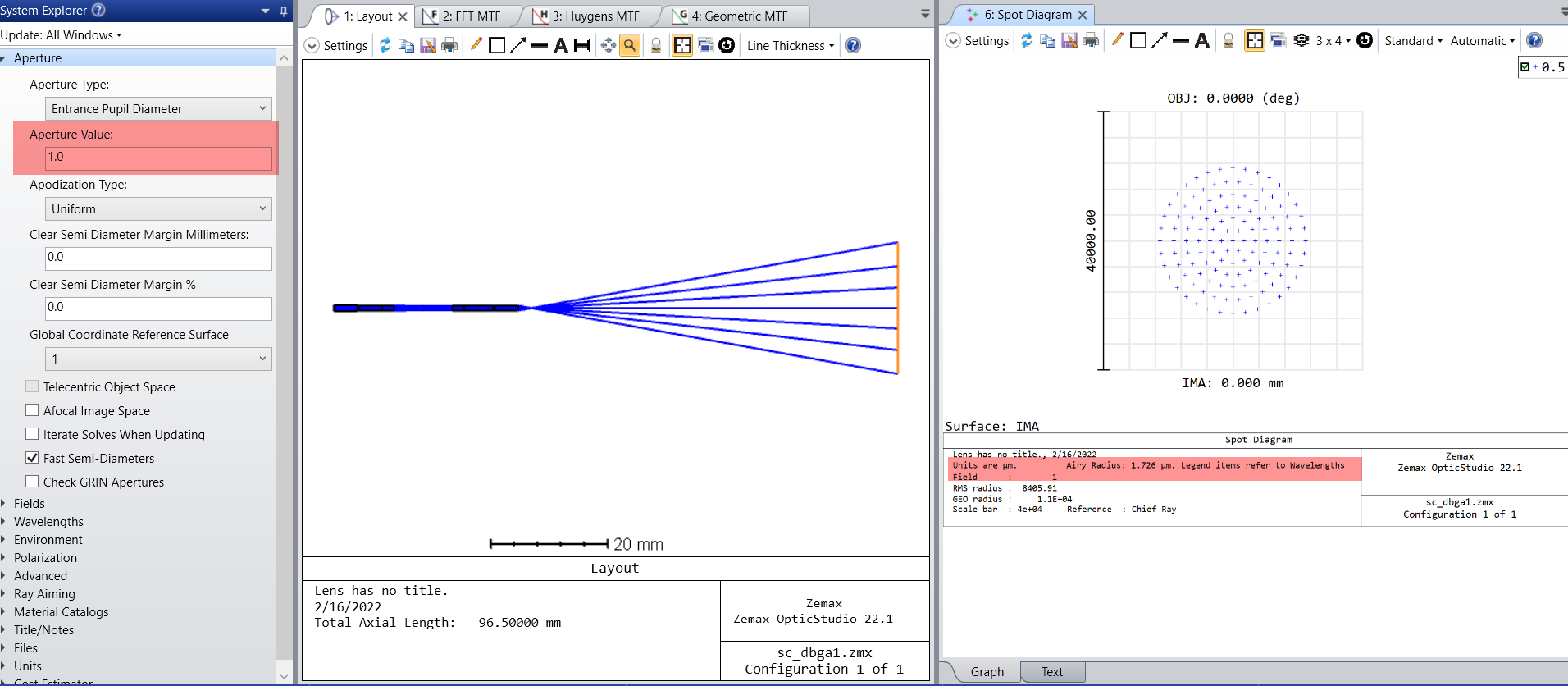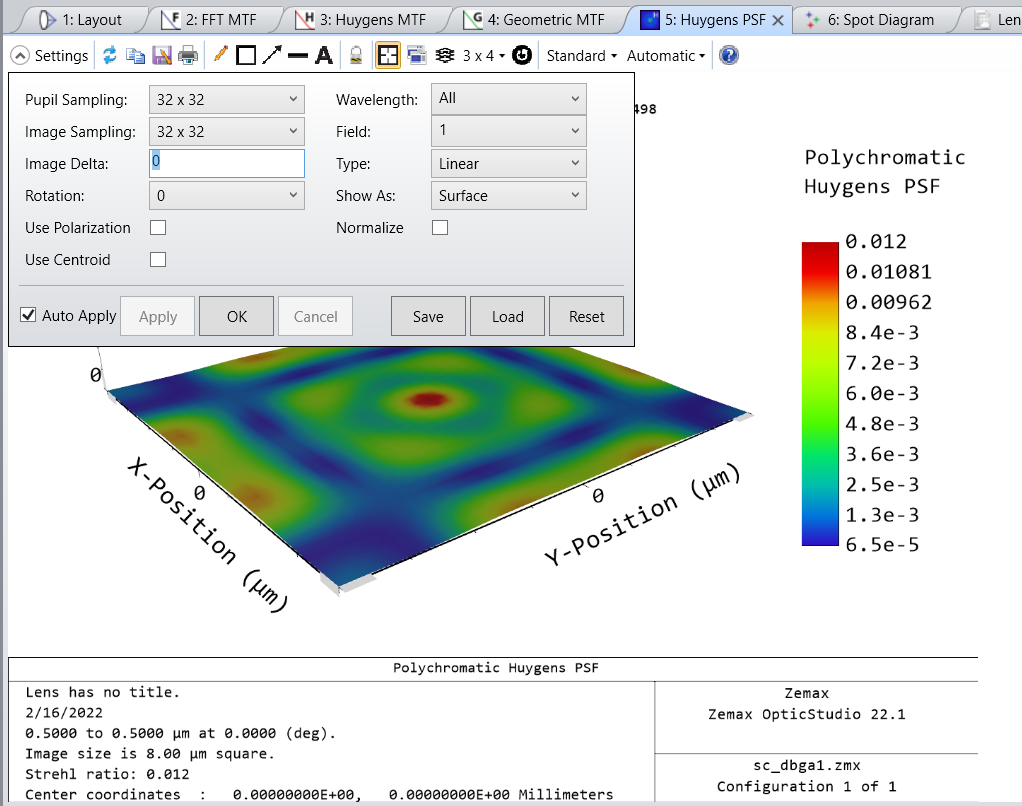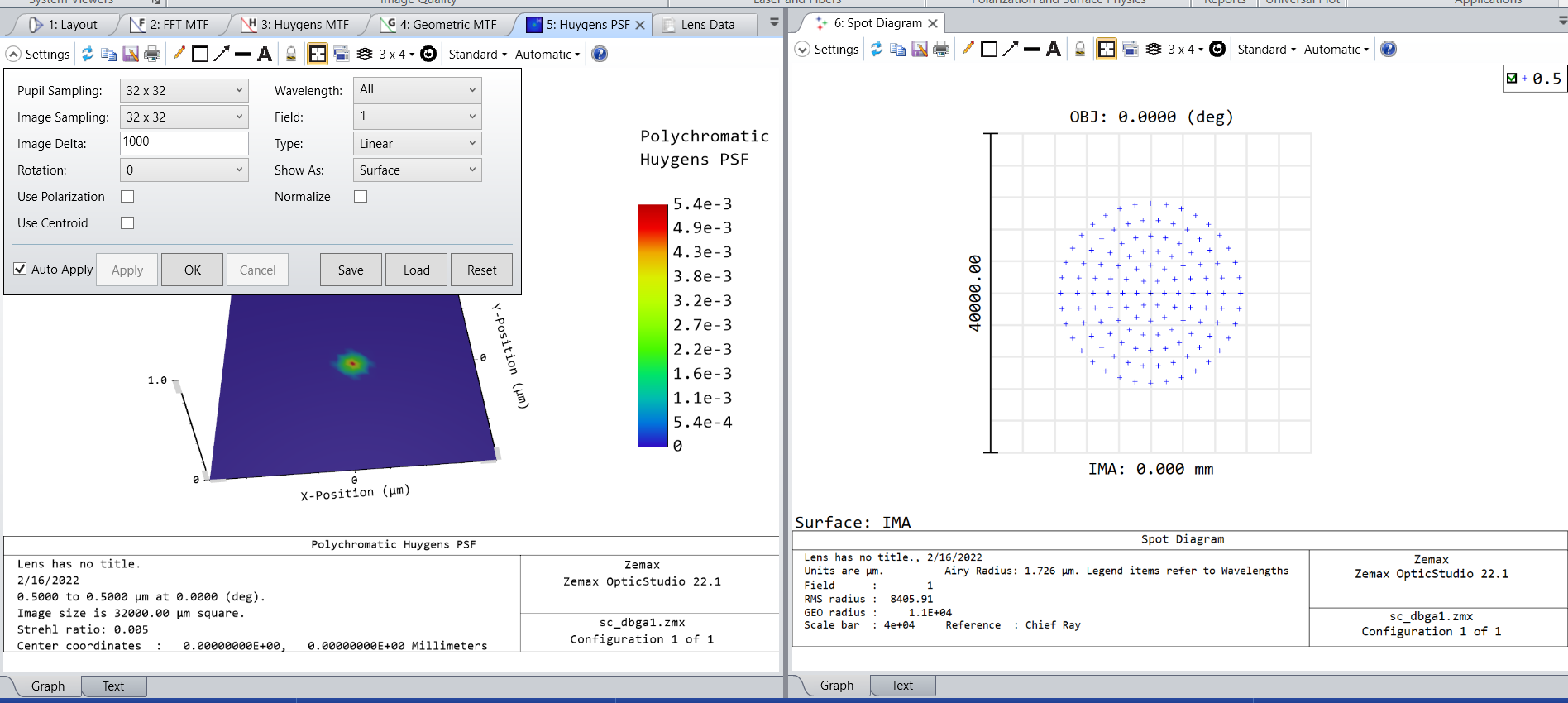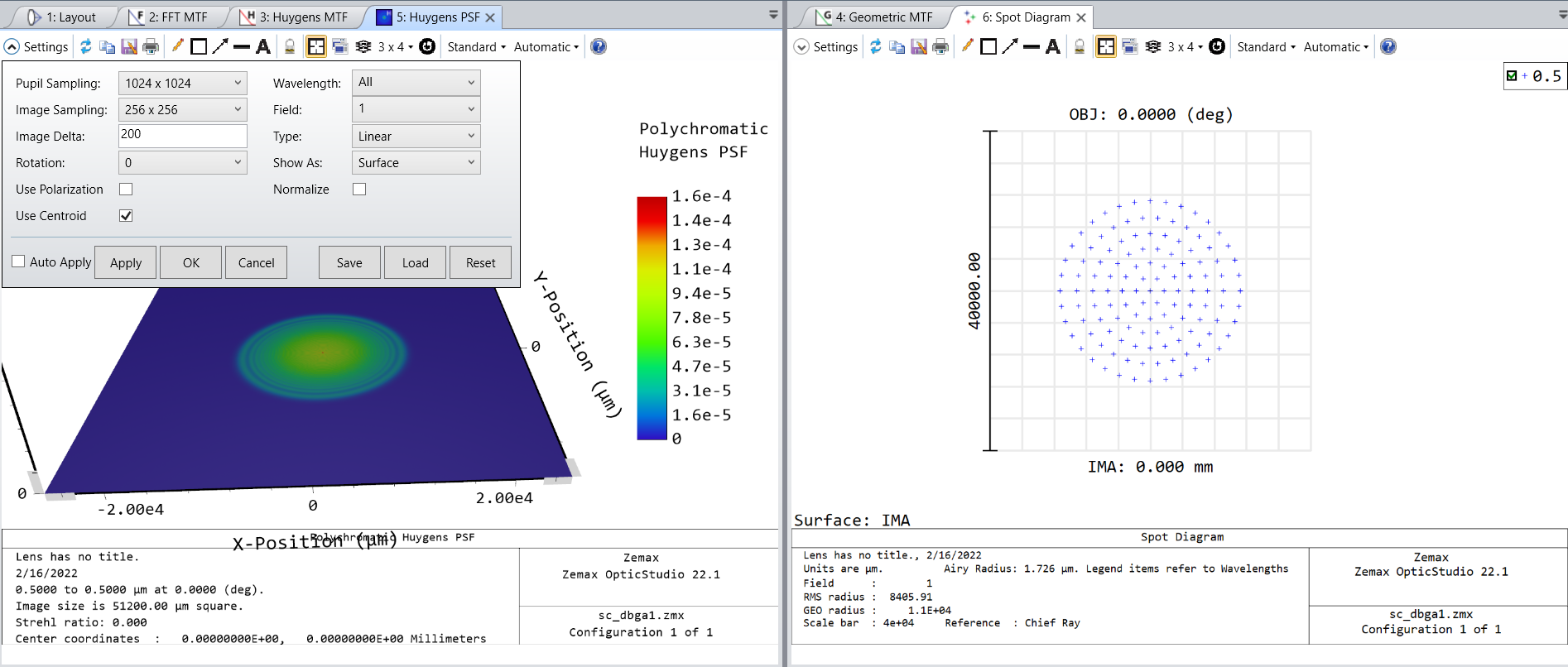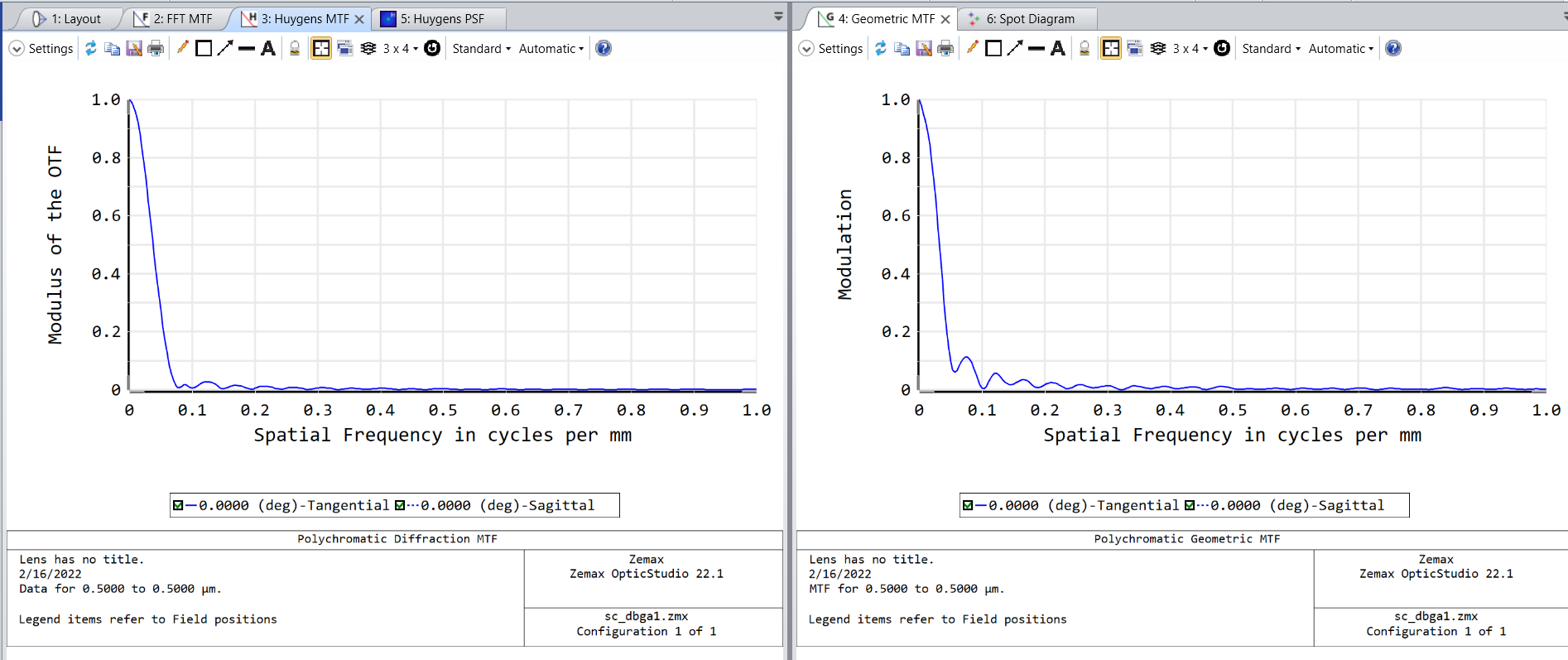I got three different MTF distributions. Why they are different and how can we eliminate the difference? Which one shall I trust?
For example, when I set the entrance pupil diameter to 1 for \Zemax\Samples\Short course\Optical System Design Using OpticStudio\sc_dbga1.zmx
I got this:




